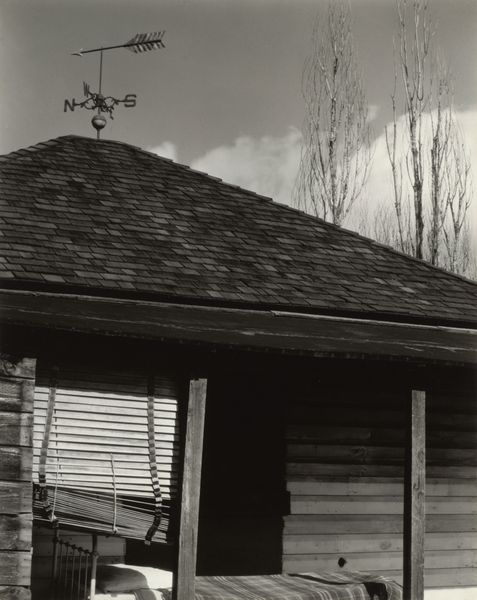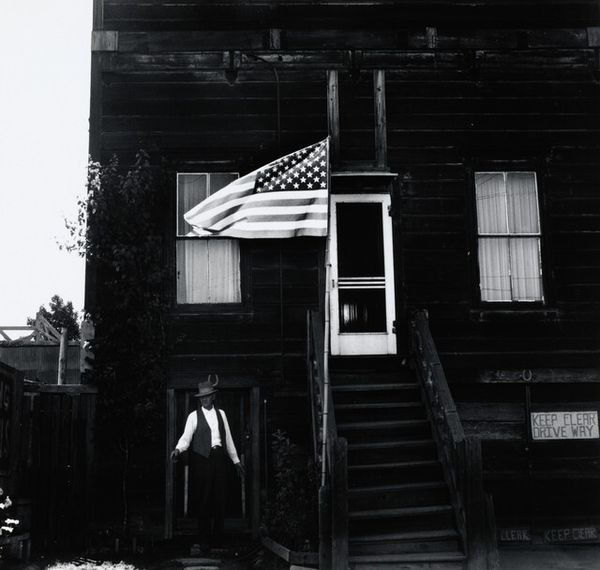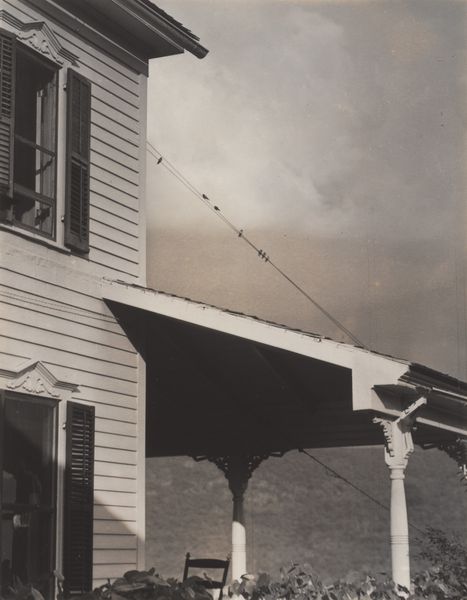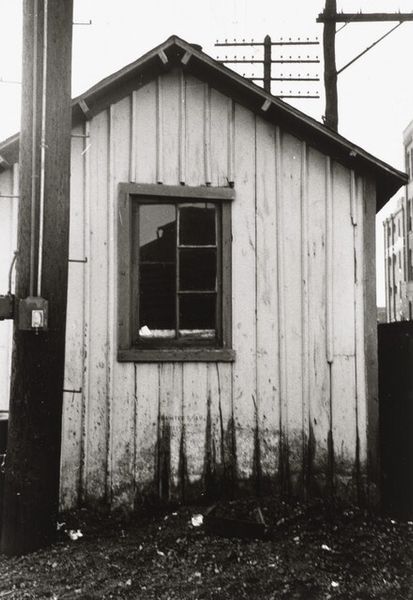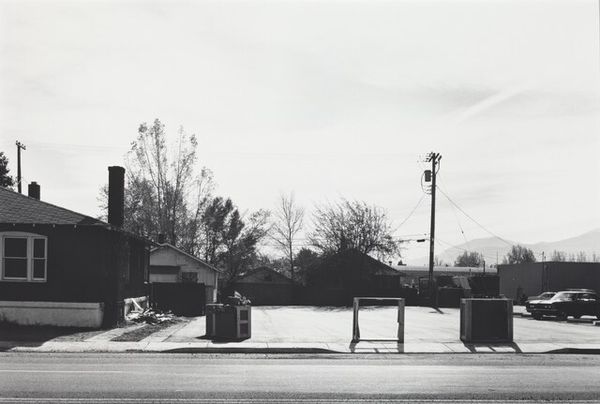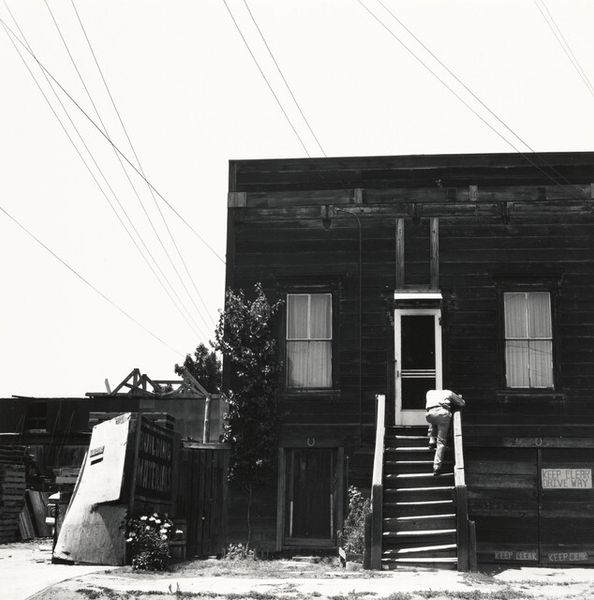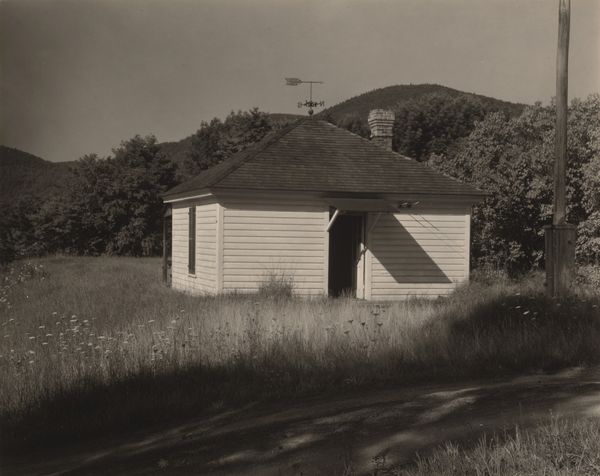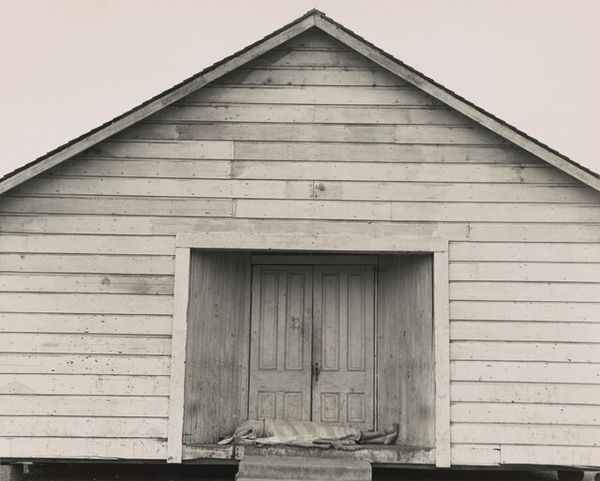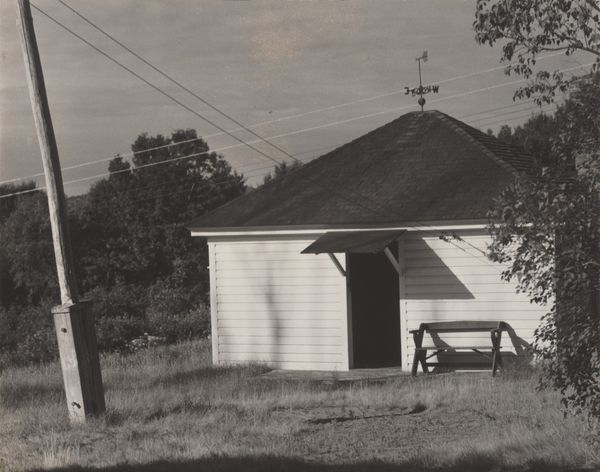
photography, gelatin-silver-print
#
black and white photography
#
landscape
#
photography
#
black and white
#
gelatin-silver-print
#
monochrome photography
#
monochrome
#
modernism
#
realism
#
monochrome
Dimensions: sheet (trimmed to image): 18.9 × 24.1 cm (7 7/16 × 9 1/2 in.) mount: 52.8 × 41.8 cm (20 13/16 × 16 7/16 in.)
Copyright: National Gallery of Art: CC0 1.0
Curator: Editor: This is Alfred Stieglitz's "Back of Little House" from 1933, a gelatin-silver print. It strikes me as particularly stark and unromantic, despite being a landscape. What do you see in this piece? Curator: Well, I see more than just a landscape. I see a social commentary. Think about the context: 1933, the height of the Great Depression. This isn’t some grand vista; it’s the humble backside of a house. Do you see it as a statement about the economic realities facing many Americans? Editor: I hadn't considered that. The focus on the ordinary, even the dilapidated, makes it feel very grounded. The textures are rough, everything feels...uncomfortable. Curator: Exactly! Consider also Stieglitz's own privilege. By choosing this subject matter, is he attempting to bridge a gap, acknowledge a different reality? Or is there a sense of distance, of observing "the other"? How do you think his social position informs the work? Editor: That's a powerful question. Perhaps there’s an element of both, a genuine attempt at empathy mixed with the inherent separation of observer and subject. It certainly complicates my initial impression of a simple landscape. Curator: And look at the composition. The rigid geometry, the emphasis on vertical and horizontal lines. Does this convey stability or constraint to you? Editor: Now that you mention it, constraint definitely resonates. The rigid lines almost box in the space. Curator: It challenges the romantic ideal of the American landscape. Stieglitz compels us to confront a less idyllic, perhaps more truthful, representation of the time. It encourages critical reflection. Editor: I see that now. This piece holds much more depth than I initially realized! Curator: Indeed, it's a reminder that even seemingly simple images can carry profound social and political weight.
Comments
No comments
Be the first to comment and join the conversation on the ultimate creative platform.
